Lichen on stone, rainforest, Vancouver Island, BC, Canada.
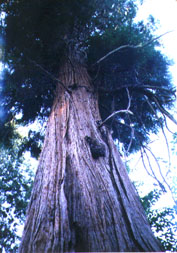 Story
of the People Who Used to Fly
Story
of the People Who Used to FlyTranscribed by John and Laurie Mead
*The San Juan Islands are in the Pacific Northwest,
off Vancouver Island, B.C., Canada.
My grandparents used to tell me, "You know, long ago people used to fly!"
People would gather at special gatherings like this one or at medicine gatherings in the longhouse, or they'd gather at the beach.
And then there was this elderly woman and she would start singing, and they called her Shining From the Eyes.
As she would sing and drum, there, people would begin to look at the trees, and there, there were people landing on the trees. They were the people from the north--which we now know as Haida Gwaii, the Haida people.
The little girl said to her grandmother: "Why are those people landing up on the trees, when they can land down here on the earth?"
"They are the people from the north. They want to make sure that they are landing in the right place... if there are people they don't like, then they will not climb down the tree."
And the little girl said, "Grandmother, can you sing that song again?" And the grandmother just smiled at her little granddaughter, and then she sang another song.
And the people from the trees began to float down to the earth. And this is the way people traveled in the beginning of the world.
The people would travel this way, but they would have one person who would sing a song. And this song was a song of the air, power of the air, and the person who had this power was a person who would help those to travel, those who lived in their body.
As the people would travel, sometimes they would travel in groups. They would sometimes travel in pairs, sometimes travel by themselves. Sometimes, they'd travel with the ducks, sometimes with the geese--never with the eagle. The eagle does not like to travel with anybody.
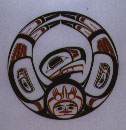
There, they'd sing the songs through the day, and then at night they would not sing the words; they would just sing the melody.
But as time began to change, the elders began to prophesy. They began to say, "Someday, our grandchildren will not be able to travel the way we do, for there will be a new mind that will come, a mind that will make the people weighted down. It will become weighted down upon the earth, and they will not be able to fly anymore."
The time came as many, many different kinds of people began to come to the land from different places: from across the ocean, from the stars, from many, many far places. The people had to get used to the new people that came to their land.
But they say that this tradition of flying began to be passed on from generation to generation in different forms.
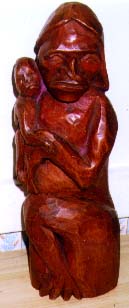 The time when the
first Europeans came, when they came and they settled on the land,
and the missionaries arrived in the land of the San Juan Islands,
they would begin to tell the people that they were not allowed
to sing the songs, that they were not allowed to drum, for it
was devil worship.
The time when the
first Europeans came, when they came and they settled on the land,
and the missionaries arrived in the land of the San Juan Islands,
they would begin to tell the people that they were not allowed
to sing the songs, that they were not allowed to drum, for it
was devil worship.
The people would cry; the grandmothers and grandfathers would begin to cry. They'd say, "How could this be devil worship? What is a devil anyway?"
And the priest would tell them, "It is a very hot place." And the elderly people thought, "Well, that's not such a bad place. It's always so cold and wet here." But he began to explain that it was a very bad place. But the people would not give up the belief of flying.
As the time came, the diseases began to come and young people began to die of common colds. People began to die. Their hearts began to be broken because their people were dying from strange new diseases.
And these elders began to sing the songs. And as they sang the songs, they began to drum.
Soon the voices were not heard. The elders one by one went to sleep, as their souls began to fly from their bodies, leaving this earth.
But they left the teachings with the children, and the children remembered when they were suffering. When everything would be taken away and destroyed, they knew they could always fly with their hearts, with their spirit, and that their grandparents, their ancestors, would comfort them.
(Left: Northwest Coast, probably Salish
carving, mother and child, cedar.)
And this is how the people of the San Juan Islands survived the
coming of the new ways. And that is all.
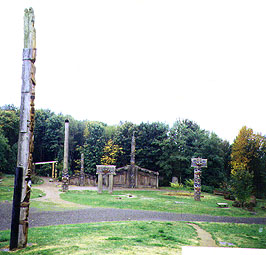
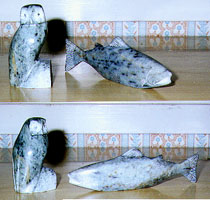
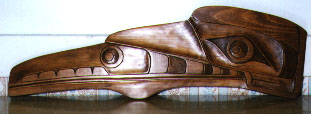
Return to Wings to Fly With Publishing
introduction.
Return to Migrations home page.
Go to Sea Mammals pages.
Go to Listening to the Stone pages.
Go to Weaving the Light pages.